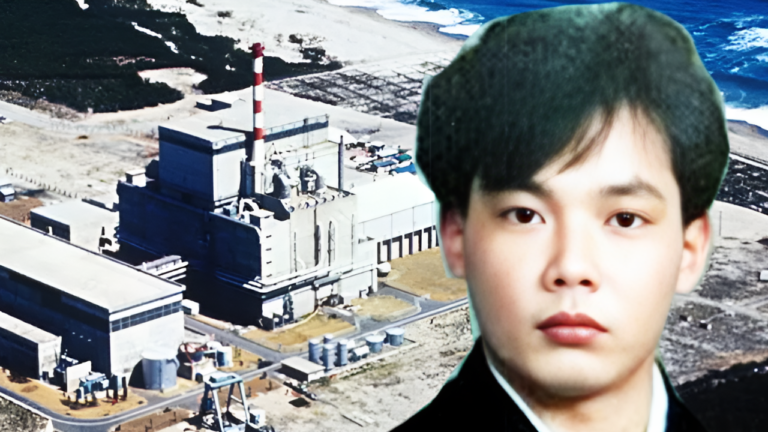Hisashi Ouchi’s story is one of the most harrowing accounts in the history of nuclear accidents. On September 30, 1999, a criticality accident at the Tokaimura nuclear facility in Japan led to one of the highest radiation exposures ever recorded in a human being. This incident not only changed Ouchi’s life but also raised significant concerns about nuclear safety protocols and the treatment of radiation victims. His tragic ordeal lasted 83 days, during which he suffered immense pain and medical complications, ultimately succumbing to his injuries on December 21, 1999. This article delves into Ouchi’s life, the circumstances of the accident, the severe effects of radiation on his body, and the ethical discussions surrounding the documentation of his suffering.
The Tokaimura Nuclear Accident
The Tokaimura nuclear accident serves as a stark reminder of the dangers associated with nuclear energy. Ouchi, along with two colleagues, was involved in the improper handling of uranium fuel, which triggered an uncontrolled chain reaction and a significant release of radiation. Ouchi was positioned closest to the nuclear reaction and received an estimated radiation dose of 17 sieverts (Sv), a level that far exceeds what any human should ever encounter
The incident highlighted severe deficiencies in safety protocols and emergency response measures, raising alarms about training personnel in nuclear facilities.
The Immediate Aftermath
Following the accident, medical professionals rushed Ouchi to the National Institute of Radiological Sciences in Chiba, where they faced a daunting task. Initial assessments showed that Ouchi’s blood cell counts had plummeted, leading to a host of symptoms, including nausea, dehydration, and severe diarrhea.
As his condition deteriorated, doctors transferred him to the University of Tokyo Hospital, where they employed various desperate measures to save his life. Despite their efforts, Ouchi’s body began to manifest severe reactions to the radiation exposure.
Hisashi Ouchi Suffering: Physical and Psychological Toll
Intense radiation burns exacerbated Ouchi’s physical suffering. Initially, his skin showed minimal signs of injury, but as time progressed, the radiation damage became horrifyingly apparent. Real photos from his hospital stay reveal the extent of his injuries—his skin deteriorated, leading to grotesque wounds and visible signs of severe pain.
The psychological impact on Ouchi was profound as he struggled with not only the physical agony but also the emotional toll of being a young husband and father in a seemingly helpless situation.
The medical team faced numerous challenges as they attempted to manage his acute radiation syndrome (ARS), which involves widespread internal damage and an inability of the body to produce new blood cells.
Ouchi’s battle against radiation poisoning became a protracted and painful ordeal. Photographs taken during his hospitalization hauntingly encapsulate the stark contrast between his previous life as a healthy individual and his current state of despair.
The Ethical Debate Surrounding Hisashi Ouchi’s Photos
The circulation of images depicting Hisashi Ouchi condition has sparked intense ethical debates. Critics argue that sharing these real photos of his suffering reduces a tragic human experience to mere shock value, undermining his dignity and the severe implications of the accident.
Conversely, supporters claim that these images serve as a crucial reminder of the catastrophic effects of negligence in high-risk industries like nuclear energy. They argue that confronting the reality of Ouchi’s suffering can promote a greater understanding of the importance of stringent safety protocols.
Regardless of the standpoint, the discussion surrounding Ouchi’s images raises vital questions about portraying tragedy in media and the responsibilities of those who share such content. It is essential to consider the potential impact on public perception of nuclear safety and the implications of industrial accidents.
Lessons Learned from Hisashi Ouchi’s Tragic Story
Hisashi Ouchi ordeal provides critical lessons regarding workplace safety, especially in industries that handle hazardous materials. Key takeaways from this incident include:
- Importance of Training: Adequate training for employees handling dangerous substances is crucial. The Tokaimura accident demonstrated that insufficient training can lead to catastrophic outcomes.
- Accountability and Responsibility: Organizations must prioritize employee safety and take responsibility for their well-being. This includes establishing comprehensive safety protocols and regularly evaluating safety measures.
- Regulatory Oversight: Strong regulatory frameworks are necessary to ensure compliance with safety standards and protocols in nuclear facilities.
- Emergency Preparedness: Developing and regularly updating emergency response plans can help mitigate the impact of unforeseen incidents and ensure that personnel are equipped to handle crises effectively.
Conclusion
Hisashi Ouchi story tragically reminds us of the human cost of negligence in high-stakes environments. His suffering powerfully demonstrates the vulnerabilities within industries dealing with potentially catastrophic materials. As we reflect on his legacy, we must advocate for improved safety protocols and honor the memory of those affected by similar tragedies. Ouchi’s plight emphasizes the need for continuous vigilance in safeguarding lives, ensuring that lessons learned from past mistakes pave the way for a safer future in the nuclear industry and beyond.
In conclusion, while Ouchi’s life was cut short, his story continues to resonate as a cautionary tale about the risks of nuclear energy and the importance of ethical considerations in documenting and sharing personal tragedies. Through remembrance and advocacy, we can strive to prevent such incidents from occurring again.
Visit for More: WillGuard.com


